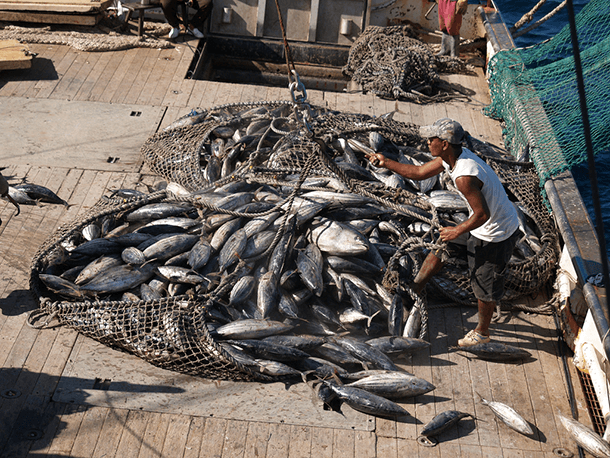Rogue fishermen beware: Big Brother is watching you
As of January 1, commercial fishing has been banned in the seas around Kiribati.
As more marine reserves are created — places where no fishing is allowed for conservation reasons — technology is playing a critical role in catching would-be violators.
Joshua Reichart, executive vice president of the Pew Charitable Trusts, says his organization has developed new technology to help governments around the world enforce their fishing bans in marine protected areas.
“The greatest threat to the world's oceans is fishing. The numbers in terms of tonnage are staggering,” Reichart says. “We've been fishing as if there were no tomorrow, and we really need to stop that.”
It seems obvious to say that fish travel all over the ocean, — the pelagic ones, anyway — and if those fish are protected only in certain marine areas, wouldn't they just be caught someplace else?
Reichart acknowledges that is highly likely. Pelagic animals can range 3,000 miles annually — from the protected marine environments to the exclusive economic zones of individual countries to the high seas.
The difficult part of protecting them is enforcing the marine protected area. For the most part, enforcement usually means catching fishing boats on the open ocean. However, the cost of diesel fuel and maintaining patrol vessels is prohibitive for many countries.
“It's too expensive to do that now, and the days of chasing illegal fishing vessels on the open ocean are really coming to an end,” Reichart says.
In 2003, for example, patrol boats chased a fishing vessel suspected of carrying illegally caught Patagonian Toothfish. The fishing boat, named Viarca 1 and flagged in Uruguay, was pursued over 7,200 kilometers over 21 days before it was caught. Cargo of 97 tons of illegally caught Patagonian Toothfish was found on board, estimated roughly $1.5 million. The cost of apprehending the vessel was more than $4.5 million.
Currently, satellites, radar systems and optical imagery are all used to determine if boats are in areas where they shouldn't be, and if they are fishing. Algorithms help determine whether a boat is traveling a straight line from point to point or if its movement suggests it might be fishing.
The Pew Eyes on the Seas program will help monitor commercial fishing activity, as well as detect, track and respond to boats that may be fishing illegally. The system relies on numerous data sources to create a portrait of what a vessel is doing in a particular area, whether it is traveling in a restricted area and where it's going.
Very comprehensive dossiers are then developed on fishing vessels. That portrait aids authorities in deciding whether a boat should be searched when it comes into port, Reichart said.
Pew has ambitious plans to facilitate the further creation of marine protected areas. It’s estimated that 10 years ago less than one-half of one percent of the world's oceans were protected in a comprehensive way, he said. Reichart and others would like to see the marine protected areas grow to 20 percent or more.
“We're steadily losing examples of big ecosystems in the world's oceans that function the way they did before human intervention," he says. "So if we're going to protect these places in the way in which some of them need to be protected, marine reserves are the best way to do that.”
This story first aired as an interview on PRI's Living on Earth.
Our coverage reaches millions each week, but only a small fraction of listeners contribute to sustain our program. We still need 224 more people to donate $100 or $10/monthly to unlock our $67,000 match. Will you help us get there today?
